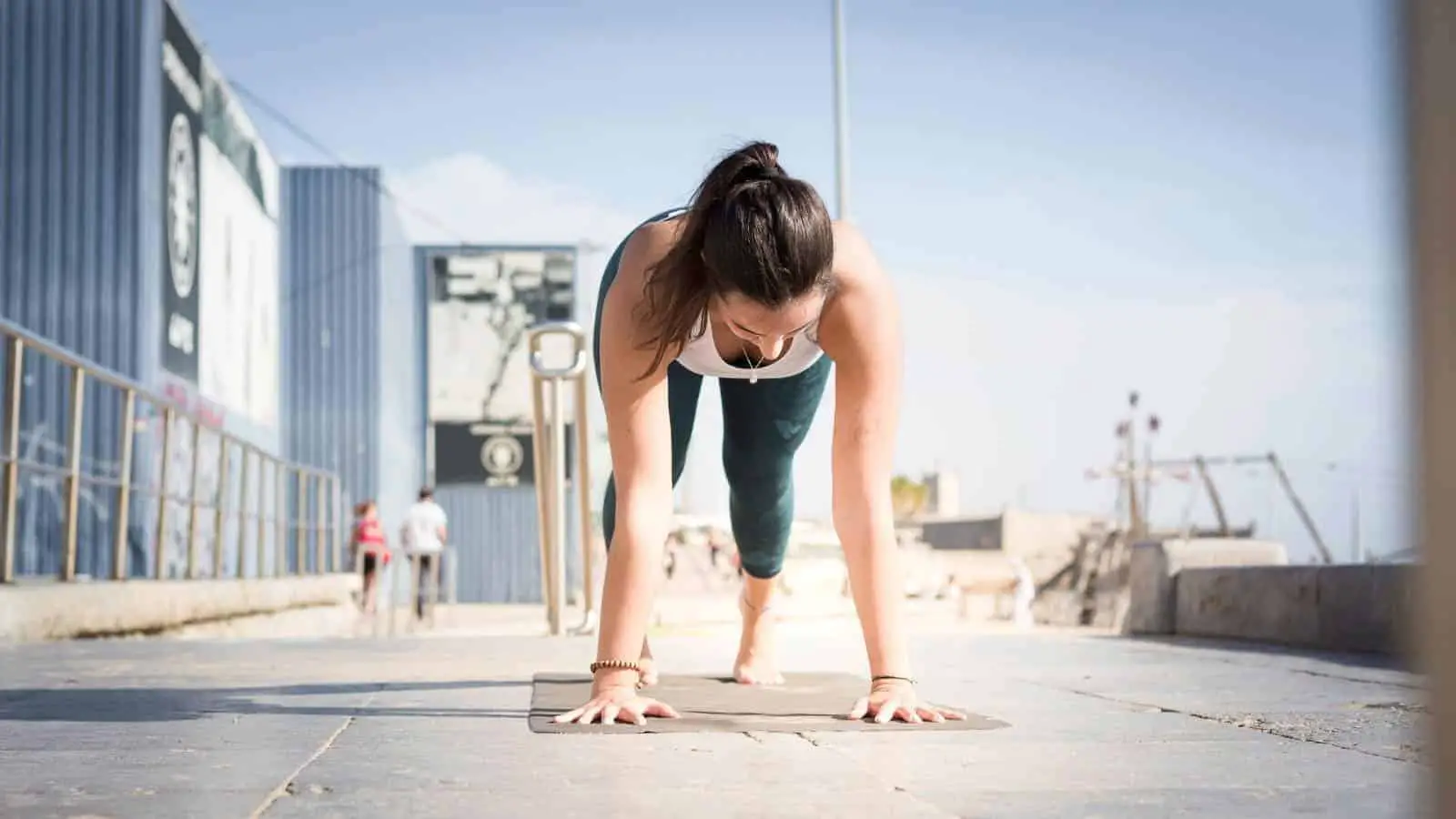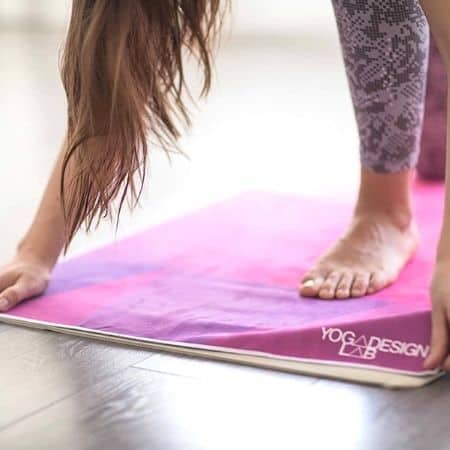Yoga is a widely accepted practice for both mental and physical health. It works on strengthening the body and mind while increasing flexibility and mobility. However, especially for beginners, people will often complain of joint issues and inflammation.
If this is happening, it’s most likely either your yoga mat too thin in thickness or the material is of poor quality. Of course, the level of thickness required for comfort is different for everyone and the types of practices they’re doing. But if it is less than the standard 3 mm (1/8th inch), you can consider yours to be thin.
Some experienced yoga practitioners even use just yoga towels or nothing at all beneath their bodies. While this may not hurt now, it can be damaging in the long term or limiting your advancement in yoga poses throughout your practice or class.
Desired yoga mat thickness
Everyone’s level of comfort is different, and many people deal with different kinds of injuries or pain, such as lower back trouble or arthritis, etc. Below are several different measures of thickness for a yoga mat and why the specific measure would be most suitable for you. Below are different areas that would require less or more comfort in padding:
- Injury/Body Pain
- Type of Practice
- Frequency/Place of Practice
Pain Tolerance
A mat that offers at least 3.5 mm in thickness would be a great alternative and option for those experiencing injuries and pain during practice and/or outside yoga practice. Lower back pain is a common issue with thinner mats due to the common pose of sitting on the tailbone to start the class.
Also, any joint pain such as arthritis would benefit from a thicker mat as many poses put more strain and stress on specific joints like the knees, wrists, and ankles. A cushioned feel will soften the direct impact of your joint bearing weight on the floor.
Types of yoga practice
The more advanced you are in yoga, the more likely you are to practice inversions. Inversions sound exactly as the name is. The weight of the body falls towards the head, with the hands, arms, or head on the ground and the feet in their air or against a wall. Here, you are inverted.
Having a thicker mat helps in two ways. One is that head, arms, and hands are not used to bearing all or most of our body weight and can feel harsh at first. A thicker mat alleviates some of this stress. Second, inversions are hard and can result in falling over. A plusher mat certainly helps with injury prevention if you were to fall ungracefully out of your inversion.
Frequency/Place of Practice
Some regular yoga practitioners buy a thicker mat because with all the classes that they do, the mat wears and compresses down at a faster rate than if it were thinner and will need replacing. With the same thought of wear and tear, if you attend all your practices inside, your mat is to expect less issues than if it was outside facing the elements.
Alternative Help
If the reason for desired thickness is for any of the listed above, but especially for the need to relieve any pain, consider some of these alternatives that can be coupled with a thicker mat or on their own to help solve the issue.
- Yoga Blocks
- Yoga Towels
- Rollers Pre Yoga
- Surfaces Below
Yoga blocks
Yoga blocks are great tools that can help with the pain of a thin mat. One wouldn’t think so because how is a small tiny block supposed to help cover a mat that is spread too thin? Well, in a sitting position, many people use the block to sit on to not only help posture but to help lower back pain. Despite it being firm, it truly can help with lower back pain when sitting.
It also helps with wrist paint as it takes the weight off the hard ground and provides a little more buffer between your body weight and the floor.
Yoga towels
Yoga towels aren’t just for wiping up sweat. They can serve as another layer on top of your yoga mat. Depending on how thick your towel is will determine just how much extra comfort and cushion you get. Because a towel is naturally thinner than a mat, it serves as a great in-between option for those who don’t want to go extra thick.
Rollers
Another accessory that is worth having is a roller. If our mat is not interchangeable at that moment because maybe we are borrowing one, but we have access to a roller pre-class, it’s recommended to use it. While it can’t help alleviate joint stress during the class, it can help alleviate lower back pain later in the class by rolling it out beforehand. Someone may not need a thicker mat but instead some attention to their back if that is the only issue they are experiencing.
Surface Below
If you are in control of your practice, consider alternative surfaces, especially outside if weather permitting. Doing yoga on the beach and sand comes with its issues, but one of its great benefits is the impact on joints. The same can be said for doing yoga on grass or softer bouncier surfaces.
This is a lot easier if you are individually practicing, but depending on where you live, many yoga instructors encourage outdoor environments and may offer to teach classes in these environments themselves.
Comparing Yoga Mats
With so many options available as the health and fitness industry booms (especially yoga), it can be overwhelming on how to find the best yoga mat that suits you. The most expensive one doesn’t always mean the best one. And the same goes for the opposite, as saving money sometimes will result in more expenses down the road as you continually buy more mats.
Below is a list of 3 well-recommended yoga mats that can serve as a starting point for you to find a mat that is suitable for your needs.
Yoga design lab yoga mat
A new generation yoga mat for those who are looking for an extra comfort, quality and longer lifespan of the yoga mat.
- 2-in-1 yoga mat: the yoga mat is made from 2 layers: for the stability, comfort and exceptional grip.
- yoga mat has perfect cushioning for joints and is easy to maintain (washing machine friendly)
Lululemon’s Reversible Mat
- This mat is 5mm in thickness that offers two sides for whatever needs you may have. It’s offered in a variety of colors and was made with support in mind.
- Two sides with one offering more grip for those who need more traction.
- Slightly oversized to offer more range of motion.
Jade Yoga Harmony Mat
This mat is made with eco-friendly materials and offers support without giving away it’s stability by being overly cushioned.
- The company itself gets praise for planting a tree for every mat sold.
- This mat comes at a more expensive cost making it slightly less competitive in pricing.
Final Thoughts
Thickness and comfort is a definite personal preference, but the warning signs are much easier to tell. Any aching and pain can be alleviated with a thicker mat or alternative accessories. Beginners may be encouraged to use thicker mats as their bodies get used to the newness of yoga and its positions.
At the end of the day, it’s a judgment call, and both levels of thickness are commonly used as one size never fits all.









